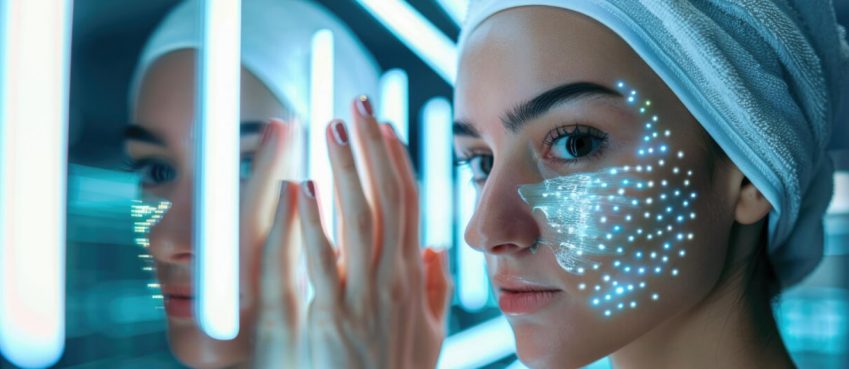
Let us imagine a couple of scenarios:
A doctor pauses before entering a patient’s room, pulls out his smartphone, and studies the patient’s chart.
A diabetic uses a mobile application for tracking their blood sugar levels.
While both of these scenarios might have been deemed inconceivable just a few years ago, they have now become extremely important aspects of medical treatment and patient care procedures across the world.
These situations essentially describe the real-world applications of mobile health, or mHealth technology, as it is popularly known as around the world.
The World Health Organization (WHO) defined mHealthas “Medical and public health practice supported by mobile devices, such as mobile phones, patient monitoring devices, personal digital assistants (PDAs), and other wireless devices”.
The increasing penetration of the internet, growing geriatric population, increasing requirement of remote patient monitoring systems and services, surging popularity of patient-centric healthcare services, and rising prevalence of various chronic diseases are some of the major factors responsible for the surging adoption of mHealth across the world.
Integrated mobile apps and connected medical instruments — the key components of mHealth —help in providing personalized patient care and home-based disease diagnosis.
Moreover, the mobile applications allow medical practitioners to provide prescriptions to patients in emergencies.
Due to the increasing adoption of mHealth solutions in numerous healthcare applications, the global mHealth market will grow in valuation, from $23.0 billion to $132.2 billion from 2017 to 2023. Furthermore, the market is predicted to advance at a CAGR of 33.5% from 2018 to 2023.
What Are Major Advantages of mHealth?
One of the biggest benefits of mHealth is the convenience it provides in disease diagnosis and treatment.
The mHealth applications and wearable and connected devices allow for the continuous tracking and monitoring of various health parameters and data, without requiring the users to visit their doctors.
As per few estimates, in 2017, 325,000 mHealth mobile apps were available for download from different app stores.
The other major advantage provided by mHealth over conventional treatment methods is that it helps in bridging the gaps in patient care, by allowing for proper communication between the patients and healthcare providers, without requiring them to meet face to face.
This smooth and fast communication between healthcare providers and patients further boosts the quality of patient care.
Some mobile health applications have the ability to integrate with the patient’s EHR (electronic health record), which allows users access to their health data through their mobile phones.
Due to the increasing healthcare costs in several countries, people are increasingly preferring the use of mHealth apps for the management and treatment of various chronic diseases. These apps help in diagnosis and prescribing treatment plans and medications for many diseases.
Also read: Forgot Notes Password? 7 Quick Way To Reset Notes Password on iPhone/iPad
mHealth Applications PlayingImportant Role in Management of These Diseases:
- Hypertension: Besides monitoring the blood pressure of a person continuously, anmHealth application can also provide several useful suggestions, such as exercise regimens, alternative medicines, and diet plans, for keeping the blood pressure under control.
- Diabetes: Internet of things (IoT)-integrated medical devices allow users to measure their blood sugar levels and various other metrics, with the help of their connected mobile applications. Based on this data, the apps can either help the patients get in touch with specialists or prescribe treatment plans to them. These applications also prescribe proper diet and exercise plans and medication, which play a major role in managing diabetes.
- Asthma: Asthma is one of the most common chronic diseases that people suffer from all over the world. The mHealth applications evaluate this condition by using the smartphone’s microphone as a spirometer and then recommend adequate treatment measures to the patient.
Demand for Connected Medical Devices Set to Surge in Future
Connected devices, mHealth applications, and services are the main media by which the mHealth solutions are provided to the users.
Out of these, the usage of connected devices was observed to be the highest in the past. This trend is also predicted to continue in the future, on account of the numerous advantages of the connected devices, such as their ability to provide real-time disease management support, allow for remote patient monitoring, lower the cost of medical treatments, and enhance the patient outcomes.
There are mainly six types of connected devices used across the world, namely sleep apnea monitors, blood glucose monitors, multiparameter monitors, electrocardiogram (ECG) monitors, blood pressure monitors, and pulse oximeters.
Amongst these, the usage of blood pressure monitors is predicted to increase at the fastest rate in the forthcoming years.
This is primarily ascribed to the changing lifestyles and dietary habits of people, and the consequently increasing incidence of diabetes throughout the world.
Increasing Internet Penetration Boosting Global Demand for mHealth
Since the last few years, there has been a sharp rise in the penetration of the internet in several countries, especially developing nations.
According to the World Bank, compared to less than 1% in 1993, almost 50% of the global population were regular internet users in 2017.
Moreover, this number is only going to rise in the coming years, on account of the rapid digitization and soaring disposable income of people.
The availability of 3G and 4G networks has further boosted the utilization of smartphones, which has, in turn, caused a tremendous surge in the adoption of mobile health applications and connected medical instruments all over the world.
According to the facts released by the China Internet Network Information Center (CNNIC), as of December 2016, China had 731 million internet users that represented 53.2% of the country’s population, with 95% of internet users being mobile internet users.
Also read: 10 Best AI Image Enhancer & Upscaler Tools (100% Working)
mHealth Penetration To Be Highest in North America in Coming Years
Globally, North America is predicted to observe the highest adoption of mHealth solutions and services in the upcoming years.
The main factors fueling the popularity of mHealth solutions in this region are the rising healthcare expenditure, increasing geriatric population, growing consumer access to various connected healthcare devices, and rising incidence of numerous lifestyle-associated and chronic diseases in the region.
As per the 2017 World Population Aging report published by the UNDESA (United Nations Department of Economic and Social Affairs), the population of geriatric people (people aged 60 years and above) was almost 78.4 million in North America that year, and this number will further rise to 122.8 billion by2050.
This massive growth in the population of elderly people will boost the requirement for remote patient monitoring systems and mobile applications in the region in the years ahead.
Hence, it can be said with conviction that the demand for mHealth solutions will surge all over the world in the years to come, primarily because of the growing geriatric population, rising incidence of chronic diseases, and increasing healthcare costs across the world, not discrediting the fact that mHealthis making healthcare more accessible and cost-effective
Top 10 News
-
01
Top 10 Deep Learning Multimodal Models & Their Uses
Tuesday August 12, 2025
-
02
10 Google AI Mode Facts That Every SEOs Should Know (And Wha...
Friday July 4, 2025
-
03
Top 10 visionOS 26 Features & Announcement (With Video)
Thursday June 12, 2025
-
04
Top 10 Veo 3 AI Video Generators in 2025 (Compared & Te...
Tuesday June 10, 2025
-
05
Top 10 AI GPUs That Can Increase Work Productivity By 30% (W...
Wednesday May 28, 2025
-
06
[10 BEST] AI Influencer Generator Apps Trending Right Now
Monday March 17, 2025
-
07
The 10 Best Companies Providing Electric Fencing For Busines...
Tuesday March 11, 2025
-
08
Top 10 Social Security Fairness Act Benefits In 2025
Wednesday March 5, 2025
-
09
Top 10 AI Infrastructure Companies In The World
Tuesday February 11, 2025
-
10
What Are Top 10 Blood Thinners To Minimize Heart Disease?
Wednesday January 22, 2025







